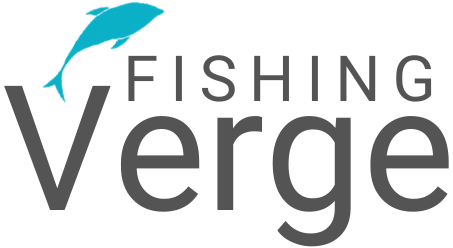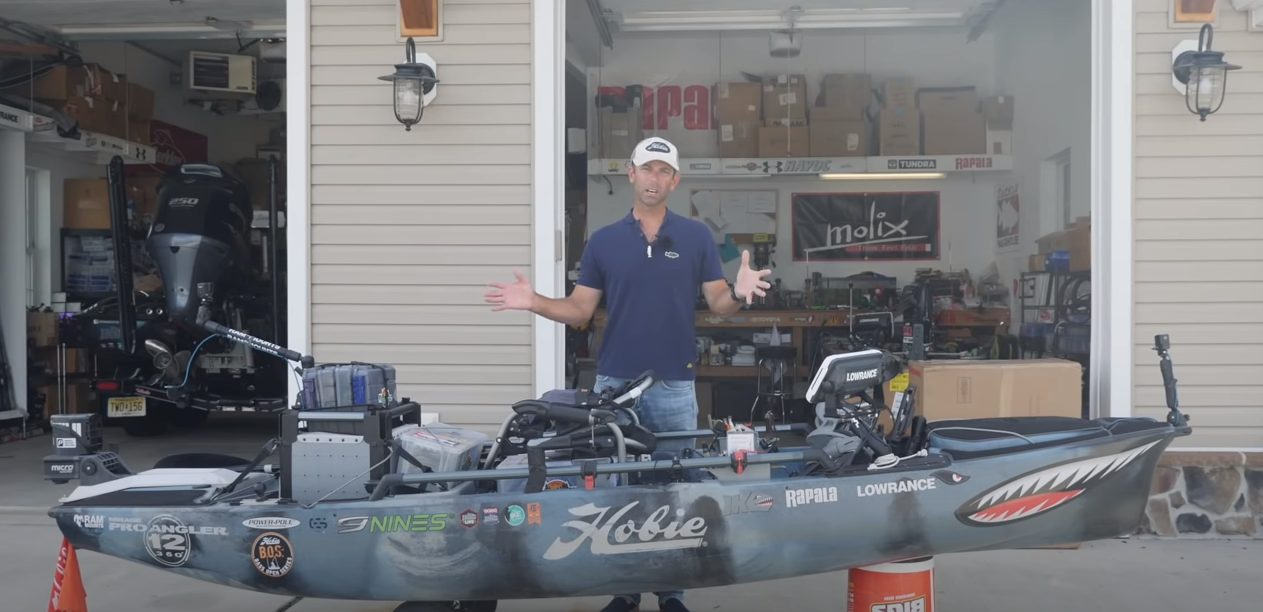I. Getting started
Kayak fishing is an exciting and rewarding way to spend your time. Kayaks are easy to move, don’t weigh much, and can go where bigger boats can’t go because of shallow water. But for a kayak fishing trip to go well, it’s important to have a kayak that’s set up right.
Setting up your kayak for fishing is important.
Setting up your kayak for fishing is very important if you want to have a comfortable and productive time. Fishing kayaks are made to be stable, easy to move around, and have space for fishing gear. They give you a stable place to cast, reel, and catch fish. Setting up your kayak correctly can make the difference between a fun day on the water and one that is frustrating.
B. A short summary of what the guide will be about
This guide will tell you everything you need to know to set up your kayak for fishing. We’ll talk about the different kinds of fishing kayaks and how to choose the right one for you. We’ll also talk about the important tools and gear you’ll need, like fishing rods, reels, tackle, and bait, as well as paddles, life jackets, and tools for finding your way.
We’ll show you how to put things like rod holders, mounts for electronics, and outriggers on your fishing boat. We’ll also give you tips on how to set up your kayak for fishing, how to stay safe, and how to be ready for an emergency.
By the end of this guide, you’ll know everything you need to do to set up your kayak for fishing and be ready to hit the water with confidence.
II. Choosing the right fishing kayak

There are many different kinds of kayaks that can be used for fishing. Kayaks come in a variety of sizes, shapes, and materials, and each has its own features and benefits. In this section, we’ll talk about the different kinds of kayaks that can be used for fishing and the things you should think about when choosing one.
A. Types of kayaks and how well they work for fishing
Sit-on-top kayaks are the most common kind of kayak used for fishing. They are stable, easy to move, and have a lot of room for storing fishing gear. They are also self-bailing, which means that any water that gets in will drain out.
Sit-in kayaks are less common for fishing, but they still have their benefits. They protect you better from the weather and can be more comfortable when it’s cold. But they have less space to store things and are harder to get in and out of.
Inflatable kayaks: Inflatable kayaks are cheap, light, and easy to move. They are great for fishing in calm water, but in rougher water, they can be less stable than hard-shell kayaks.
Pedal kayaks: People are using pedal kayaks to fish more and more because they let you fish without using your hands and are easier to move around in. Most of the time, they cost more than regular kayaks, but they give you a unique experience on the water.
B. Things to think about when buying a fishing kayak
Stability: Look for a kayak that is stable enough that you can stand up and cast without it tipping over.
Storage: Make sure the kayak has enough space to hold your fishing gear and anything else you’ll need for your trip.
Weight and size: Think about how heavy and big the kayak is and how easy it will be to move and store.
Budget: Fishing kayaks can cost anywhere from a few hundred to several thousand dollars, so think about your budget when picking one.
Think about what kind of water you’ll be fishing in and what kind of fish you’ll be trying to catch. Different kayaks are made for different kinds of fishing, so choose the one that works best for you.
By taking these things into account, you’ll be able to choose the best kayak for fishing. Don’t forget that choosing the right kayak can make or break your fishing trip.
III. Essential gear and tools for fishing from a kayak

For a kayak fishing trip to go well, it’s important to have the right gear and supplies. In this section, we’ll talk about the essential gear you’ll need for kayak fishing, like fishing rods, reels, tackle, bait, paddles, life jackets, anchors, anchor trolleys, and fish finders.
A. Rods and reels used to fish
The most important things for kayak fishing are fishing rods and reels. You’ll need a rod and reel that are right for the kind of fish you want to catch and the water you’ll be fishing in. Look for a rod that is light and strong and has a smooth drag system.
B. Gear and lures
Having the right gear and bait can make or break your fishing trip. Think about the fish you want to catch and choose your tackle and baits accordingly. Hooks, sinkers, swivels, and lures are all common fishing gear for kayaks.
C. Kayak and life vest
You need a paddle to move your kayak around on the water. Choose a paddle that isn’t too heavy and is easy to hold. For safety, it’s also important to wear a life jacket when kayak fishing.
D. Anchors and anchor-carrying devices
Having an anchor and anchor trolley can help you keep your kayak still while fishing. A anchor trolley makes it easy to move the anchor and keeps the anchor line from getting in the way of your fishing.
E. A fish finder and tools for getting around
A fish finder can help you find fish underwater, making it more likely that you will catch more fish. Tools like maps, GPS, and compasses can help you find your way through the water and back to shore.
If you have these kayak fishing essentials, you’ll be better prepared for a successful fishing trip. Always put safety first, so make sure to wear a life jacket and take any other precautions you need to.
Putting fishing equipment on your kayak
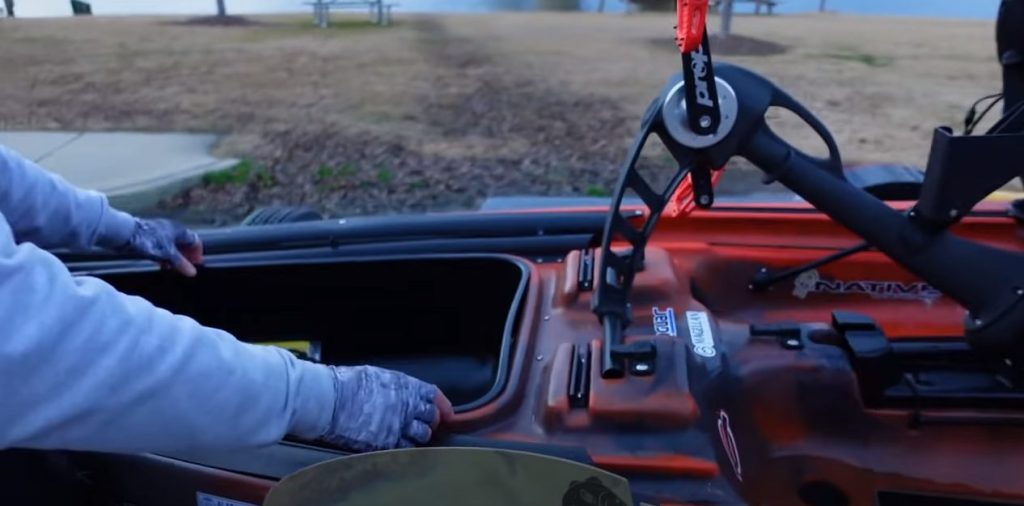
To make kayak fishing more fun and productive, you need to make sure your kayak is equipped with the right accessories. In this section, we’ll talk about some of the most important kayak accessories, such as rod holders, places to mount electronics, storage options, and outriggers and stabilisers.
A. Rod holders
Rod holders are a must-have for fishing from a kayak. You can keep your fishing rods safe and close to you while paddling or fishing. There are different kinds of rod holders, such as those that are flush-mounted, clamp-on, or can be moved.
B. Mounts for gadgets
If you use a fish finder or other electronic devices while kayak fishing, you’ll need a secure way to mount them on your kayak. There are different kinds of mounts, such as those with suction cups, rails, or pedestals.
C. Options for storing
Kayaks don’t always have a lot of room for storage, so it’s important to make the most of the space you have. Installing bungee cords, hatch covers, and gear tracks can help you keep your fishing gear and other gear in order and safe.
D. Outriggers and stabilisers
Outriggers and stabilisers can make your fishing kayak more stable, making it easier to cast and reel in fish. They can also make your kayak easier to paddle and more comfortable.
By adding these important items to your kayak, you’ll be better prepared for a successful and fun fishing trip. When deciding what accessories to put on your kayak, think about what you need and what kind of fishing you’ll be doing.
V. Tips on how to set up your kayak for fishing
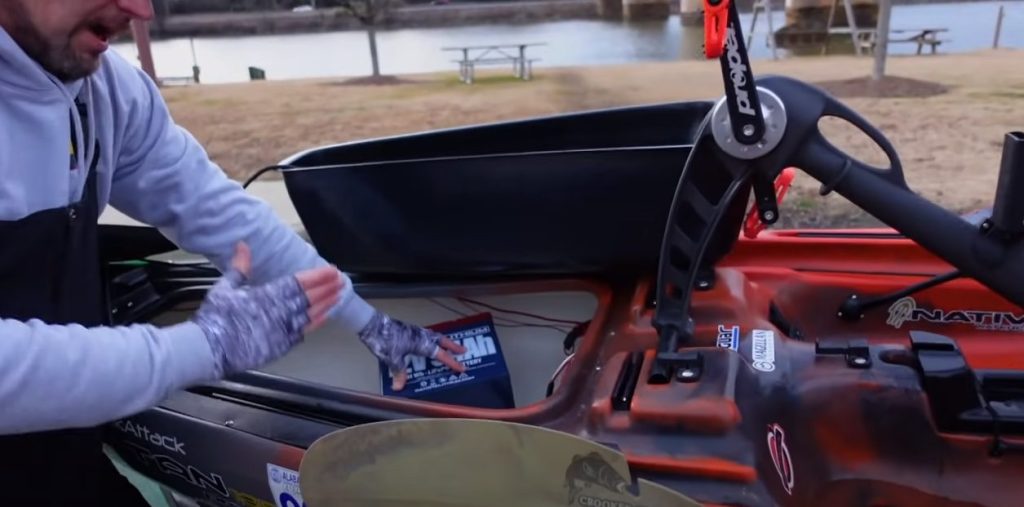
How well you organise your kayak can make a big difference in how much fun you have fishing. In this section, we’ll talk about how to set up your kayak for fishing, including where to put your gear and equipment, how to handle your catch, and how to make a checklist for kayak fishing trips.
A. Putting gear and equipment in the right place
If you put your fishing gear and supplies in the right place, they will be easier to find and use. Things you use often, like your fishing rods, tackle, and baits, should be easy to get to. You might also want to keep a dry bag or container nearby to store electronics, snacks, and other things.
B. Ways to take care of your catch
When fishing from a kayak, it can be hard to keep track of what you catch. You might want to bring a net or stringer to keep your catch safe and close by. You might also want to buy a fish bag or cooler to keep your catch from going bad while you’re out on the water.
Making a list for your kayak fishing trips can help you make sure you have everything you need for a safe and successful trip. Things like your fishing rods, reels, tackle, baits, life jacket, paddle, anchor, and fish finder might be on your list. You might also want to put on your list a first-aid kit, sunscreen, and bug spray.
By putting your kayak in order and making a list, you’ll be better prepared for productive and fun kayak fishing trips. Be sure to always put safety first and follow any local rules or regulations when you’re on the water.
VI. Things to think about when kayak fishing

Kayak fishing can be a fun and safe thing to do, but you should always put safety first on the water. In this section, we’ll talk about how to stay safe when kayak fishing. We’ll talk about the weather, paddling techniques and safety measures, being ready for emergencies, and how to get help.
A. Knowing how the weather works
Before you head out on the water, you should know about the weather and how it might affect your kayak fishing trip. Check the weather reports for your area and pay attention to things like wind, currents, and tides. Don’t go kayaking in bad weather, and be ready to change your plans if the weather changes while you’re out on the water.
B. How to paddle and safety precautions
Using the right paddling techniques and taking safety precautions can help keep you from getting hurt while kayak fishing. Make sure you are paddling the right way, which includes keeping a good posture and using your core muscles. Wear a life jacket that fits well and think about buying a whistle or other way to call for help in case of an emergency. Don’t go kayaking by yourself, and let someone know what you plan to do before you go.
C. How to be ready for emergencies and how to save people
If something goes wrong while kayak fishing, it’s important to be ready and know how to get help. Bring a first-aid kit and think about taking a basic course in CPR and first aid. Know how to do things like get back into your kayak after it has flipped over. If you can, kayak with a friend or a group, and make sure someone on land knows your plans and can call the police if something goes wrong.
You can have a safe and fun kayak fishing trip if you put safety first and do things the right way. When you’re on the water, always wear a life jacket and follow the rules and regulations in your area.
VII. In the end
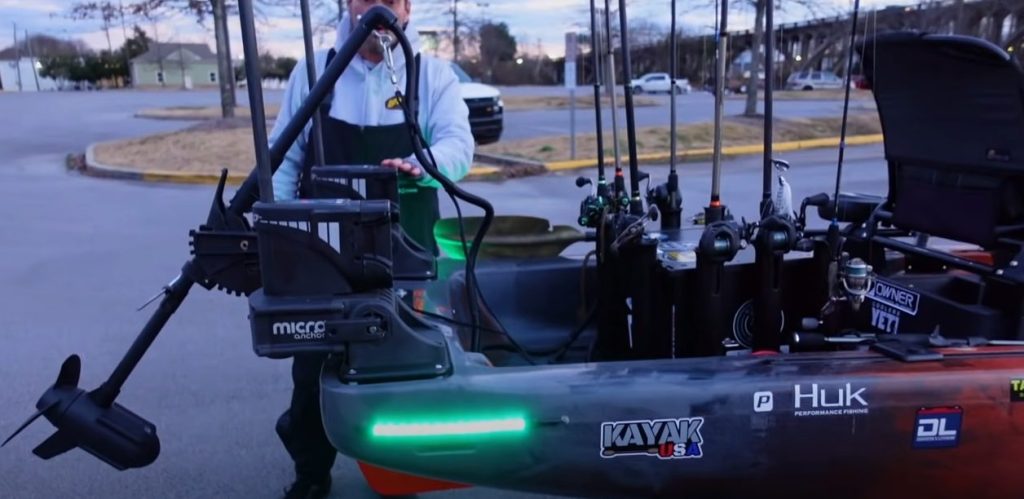
Kayak fishing can be fun and rewarding, but it’s important to make sure your kayak is set up right and that you put safety first on the water. In this guide, we’ve covered everything you need to know to set up your kayak for fishing, including how to choose the right kayak, the essential gear and equipment, how to install fishing accessories, how to organise your kayak for efficiency, and safety tips.
A. Go over the main points
To sum up, here are some important things to remember when setting up your kayak for fishing:
Choosing the right kayak for your needs means taking things like stability, size, and weight capacity into account.
Investing in things like fishing rods and reels, tackle, and life jackets is important.
Putting fishing gear on your kayak, like rod holders, electronics mounts, and storage options, can make it easier to fish.
Getting the most out of your kayak by putting gear and equipment where they are easy to reach, keeping track of what you catch, and making a list for fishing trips
Putting safety first on the water by knowing the weather, using the right paddling techniques and safety precautions, and being ready for emergencies
B. Encouragement to go kayak fishing and do it safely and well.
Kayak fishing can be fun and exciting if you have the right gear and safety measures in place. We want you to go out and have fun, but always put safety first and follow the rules and regulations in your area. You can have a successful and safe kayak fishing trip if you plan ahead and bring the right gear. Good luck fishing!
